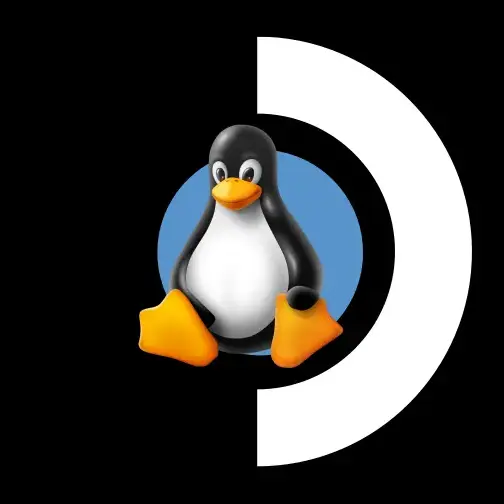

For what it’s worth, though, you can proxy other services, like Gemini or gopher, through the same proxy for simplicity’s sake.
Also at k3can@mastodon.hams.social


For what it’s worth, though, you can proxy other services, like Gemini or gopher, through the same proxy for simplicity’s sake.


I self host.
I use nginx as a reverse proxy with crowdsec. The backends are nginx and mariadb. Everything is running on Debian VMs or LXCs with apparmor profiles and it’s all isolated to an “untrusted” VLAN.
It’s obviously still “safer” to have someone else host your stuff, like a VPS or Github Pages, etc, but I enjoy selfhosting and I feel like I’ve mitigated most of the risk.


I’d imagine that if your job is making YouTube videos, portainer and other graphical abstraction layers probably make more visually interesting videos than just watching someone type out a bunch of commands.


If you’re going to be playing with custom locations and such, it might be worth using nginx directly instead of through the limitations of NPM.


I know I’m a bit late to the conversation, so I don’t know if this is still helpful… But I have a camera with “AI Detection” built into it and it appears to send alerts via its ONVIF connection. I’ve disabled motion and other detectors on my NVR (AgentNVR) and instead configured it to just wait for an alert from the camera itself to start recording. It’s been working quite well.
My initial plan was to use a coral TPU and frigate, but the Coral/Gasket drivers appear to be pretty old and I couldn’t get them to work properly, myself.


Convenience. Unless you live right near the border, it’s probably faster/easier to shop in your own state than drive all the way to another.
But if you do live near the border of a state without a sales tax, then it’s pretty common to shop in the neighboring state, especially for larger purchases.


The US doesn’t have a national sales tax, so it depends whether the individual state imposes a tax or not.


I’ve also been running nginx in an unprivileged LXC container. I haven’t used fail2ban, specifically, but crowdsec has been working without issue.
You can mostly just treat an LXC like a normal VM.


I know you said you decided against it, but perhaps reconsider USB?
I was facing the same dilemma a few months ago, and ultimately decided that trying to break out those internal connections wasn’t worth it. The problem with these tiny PCS is that they are not designed with arrays of drives in mind. There’s typically not enough room in the case to properly add an additional drive, so you end up running the sata cord through a hole in the case and using an external drive and power supply anyway.
USB on the other hand, is intended to connect to an external device. The connectors themselves are more robust and they can even supply power.
I use my external drive for data I don’t have to access constantly, like templates and backups. 90% of the time it’s just sitting in standby. If you need to access a lot of data constantly, you might start to notice the slower USB speeds; if you can segment your data, keeping your “working” files on the internal drive and just use the external for storage, you probably won’t notice the USB at all. It’s certainly not the perfect solution, but with your particular restrictions, it might be the better tool for the job.
The other option would be Network Attached Storage, essentially a low power computer that just exists to allow other computers to access its storage. You can probably find an old, cheap desktop PC for sale locally, likely for less than it would cost you to bring out those internal ports and buy a drive enclosure and power supply.
I’m using cloudflare as my nameserver and the free API seems to work just fine with ddclient.
I do occasional smaller “takeouts” and haven’t had any issues.
I have an “automatic album” (or whatever they call it) where all the photos of friends and family (even pets) get automatically added to it. Then I can just request a “takeout” for that one album, since those are the photos I actually care about. It’s a much smaller download than the entirety of my Photos account.
Steam controller or PlayStation, depending on the game.
I have a couple Libre Office files where I document the non-technical stuff for my own quick reference, like network layout in Draw, or IP and port assignments in Calc. I use a git repo to store and organize podman scripts, systemd unit files, configs, etc. Probably not the most elegant solution, but it’s simple and FOSS.
Reverse proxy is Nginx Proxy Manager.


I have the older “Google WiFi” mesh and I was able to install OpenWRT on them. You might want to see if that’s an option for yours before spending money on a new system.
This might be a good start: https://github.com/ecdye/zram-config
Libre Office “Base”
Another option would be to redirect logs to a ramdisk. That’s what I’m doing on a RPI to try to minimize writes on the sd card. The biggest downside is that you lose your logs when you power off the device, but if the alternative is not having logs at all, I think it’s still a better option.
Of course, installing a proper drive is still the best solution.


Not much any more. I brought it to PAX this year to keep me entertained while waiting in lines, but otherwise it’s barely come out of its case this year.
I don’t blame the deck, though I’ve scarcely played any video games this year, in general. When I got it, I played a bunch of the Witcher 3, but then they released an update that completely broke the game on decks. After that, my go-to game (when I play) became Cities Skylines, which just feels far more natural with a mouse.


Just bought Palworld, but haven’t had a chance to play yet.
I use podman almost exclusively at this point. I like having the rootless containers and secrets management. If you’re on Debian, though, I strongly suggest pulling podman from Trixie. The version in Bookworm is very out of date and there’s been a lot of fixes since then.